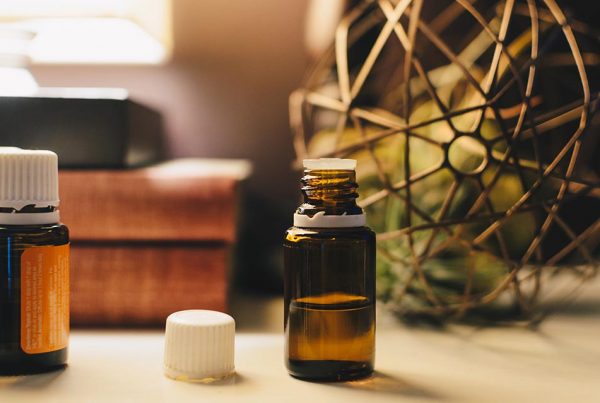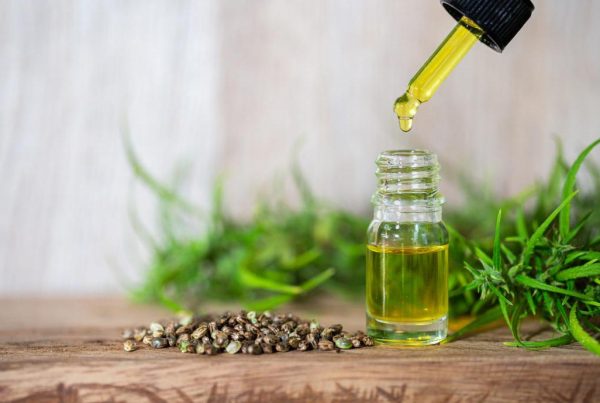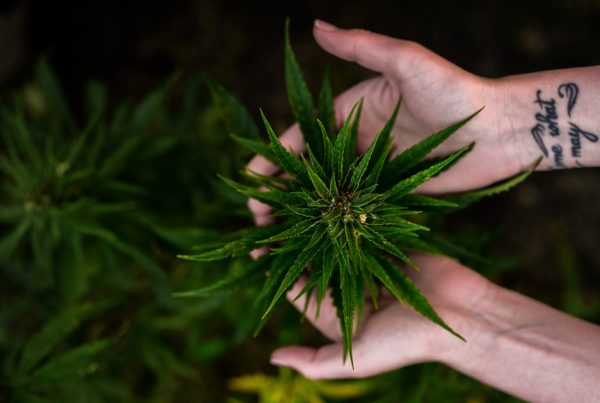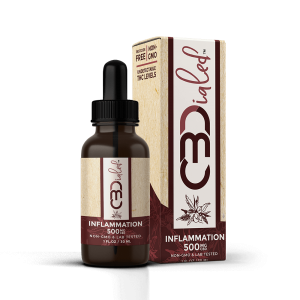
CBD tinctures are one of the most popular ways to take CBD. It is one of the easiest delivery methods available. The increasing popularity of CBD leaves a lot of questions about what a quality CBD tincture formula is. In this guide to CBD tinctures, we’ll help you distinguish between quality products and less than desirable options.
CBD Tinctures Broken Down
Before we go into detail about the different types of CBD tinctures available, a little information on cannabidiol is a good place to start. Cannabidiol (CBD) is the most abundant cannabinoid found in hemp and the 2nd most abundant in cannabis. It is a non-intoxicating cannabinoid that is used by people of all ages and pets.
CBD may help support relaxation and a healthy stress response. Many find CBD to be a better alternative to prescription medications and narcotics.
The concentrations of CBD in strains of cannabis vary greatly. In cannabis, THC is the predominant cannabinoid and is what produces the “high” that is felt upon its ingestion. THC is also present in hemp, but in very small amounts of 0.3% or less.
This miniscule amount of THC in hemp does not induce a high – even if extract from an entire hemp plant is consumed.
Hemp-Derived CBD
The source of CBD does not matter; CBD is CBD whether it is from cannabis or the hemp plant. Given the association to the cannabis family, cannabidiol still has some stigma attached to it – mostly because it just isn’t understood well by the masses.
Concentrations of CBD are much higher in hemp. This is also the best option for extracting the most cannabidiol for use in making tinctures, vape, edibles, topicals and other non-intoxicating products.
How are CBD Tinctures Made?
Tinctures start by harvesting hemp plants. Once harvested, the plants are subjected to an extraction process. Several extraction methods exist, but supercritical CO2 extraction and ethanol extraction are the most popular.
With supercritical CO2 extraction, the hemp passes through carbon dioxide that is set at a specific pressure and temperature. The heat setting is low but the pressure setting is high. This is considered to be the preferred extraction method as it is the cleanest and leaves no toxins or chemical residue behind. This is also the best method for achieving extraction of all of the compounds in the hemp plant.
Ethanol extraction occurs with the hemp passing through ethyl or isopropyl to extract CBD and the additional compounds in the hemp plant. Additional distillation and filtration processes may be required to remove traces of the extraction solvent that may remain.
The material that comes from the extraction process is thick and gooey. The extract is rich in cannabidiol and contains additional cannabinoids and terpenes.
Depending on what type of CBD the manufacturer wants to use, the raw extract may undergo additional refinement and distillation. The most refined type of CBD is isolate. This is where all of the cannabinoids and terpenes are stripped, leaving just the CBD. In full spectrum CBD, all of the cannabinoids and terpenes remain but the unwanted materials such as chlorophyll and other plant materials are removed.
Once the manufacturer has the type of CBD it wishes to use, the CBD is mixed with a carrier oil. The most common carrier oils are MCT oil, coconut oil, hemp seed oil and olive oil. MCT oil is medium-chain triglyceride oil that is derived from hemp seeds or coconut. CBDialed uses MCT oil in our formulas.
Some formulas stop with just CBD and a carrier oil. Some manufacturers, like CBDialed go a step further and add additional terpenes to their formulas.
What are Terpenes?
You may see terpenes mentioned a lot in the cannabis and hemp industries. Terpenes are what give cannabis, hemp and thousands of other plants their flavors and aromas. These compounds are found in thousands of herbs, spices, plants, trees and other vegetation.
If you see terpenes listed as an ingredient – this is a good thing. Terpenes have accepted and proven therapeutic benefits. When terpenes are added to a full spectrum or broad spectrum CBD oil, the entourage effect is attainable. In products containing CBD isolate, the entourage effect cannot be achieved as THC is missing.
The entourage effect refers to all of the cannabinoids and terpenes of the hemp plant or a cannabis strain working together.
Taking CBD Tinctures
Tinctures can be used in a couple of ways. Every individual has a preference. In this section of our guide to CBD tinctures, we’re taking the confusion out of taking tinctures. You have options, so that no matter what your preference is – there’s a way for you to enjoy using your tincture.
Under the Tongue
Sublingual ingestion is the most common way to use a CBD tincture. The CBD, cannabinoids and terpenes absorb under the tongue. The process of using sublingual tinctures is easy.
Start by shaking the bottle well. Fill the dropper to your preferred dosage. If you are new to tinctures, start with the manufacturer’s suggested serving or dose. Empty the dropper under your tongue. Hold the liquid under your tongue for 1 full minute. Swallow.
There are mucus membranes in the mouth under the tongue that allow for the absorption of compounds. From these mucous membranes, the CBD and its added components are delivered directly to the bloodstream.
Sublingual use of tinctures is popular because the CBD does not have to travel through the digestive system or liver before being distributed through the body.
Taking tinctures sublingually is different for everyone. For some, the effects may be noticed in just a few minutes. For others, it may take between 20 and 30 minutes before the effects are noticed.
Add to Food and Beverages
Tinctures are easy to add to food and beverages. If you use CBD in the morning, consider adding it to your cup of coffee or tea. It can even be added to a glass of juice or a smoothie.
When adding it to a recipe, try to make it the last component added to the dish. For example, if you have a bowl of pasta, add it as a finishing oil.
Additional options for adding a tincture to your food:
- Salad dressings
- Marinades
- Dessert toppings
- Flavor soak for baked goods
- In stew
- In soup
- Blended with mayonnaise for burgers and sandwiches
- Over fresh fruit
You can add a CBD tincture to any food that you wish.
It is important to know that the effects of the CBD will take longer to notice when it is added to food. The tincture will go through the digestive process just like food does. It may take 45 minutes to an hour to notice the effects.
Flavored CBD Tinctures
We are including a little information about flavorings in our guide to CBD tinctures because the availability of flavored options is increasing. It is important to know what kind of flavorings to look for. CBD tincture manufacturers often offer flavored CBD products. Not everyone likes the flavor of plain CBD oil. It is important to look at the type of flavoring that is used in the formula.
Terpenes do help improve the flavor of the naked oil. Essential oils are common as well. These oils, however, may be too much flavor for some. It is important to select a flavor that you enjoy, first and foremost.
Extracts are also common in tinctures. It is ideal to select a product that uses a non-alcohol extracted flavor option. Alcohol extraction can leave an unpleasant aftertaste. In some formulas, it can also make them taste too medicinal.
CBDialed does not use alcohol extracted flavor components. Our peppermint and vanilla flavors are pure, non-alcohol extracted options.
Advantages of Tinctures
One of the biggest advantages of using tinctures is how easy they are to use. The bottles travel well and offer a discreet way to use your CBD product without raising eyebrows. There is no cannabis odor associated with tinctures either.
Tinctures are a fast delivery method. Once the formula hits the mucous membranes under your tongue, your body can start absorbing the CBD and other cannabinoids/terpenes of the formula. One minute is the recommended amount of time to hold the liquid under your tongue, but up to 2 minutes is also okay.
Versatility of use and application are also what make tinctures popular. Tinctures can be used alone, added to food or made into a topical product. Consider trying a homemade facial mask or scrub and adding some of your CBD tincture to it. This can also be done with homemade soaps, lotions and salves.
It is easy to adjust your dose should you need more or less on any given day, and it is advisable to begin with the MED (minimum effective dose) and work upwards as needed.
Disadvantages of Using Tinctures
There aren’t many disadvantages associated with tinctures. If you have trouble swallowing, this may not be the best delivery method. The amount of liquid in the dropper is small.
Tinctures should not be vaped. If you wish to vape CBD, purchase an oil that is designed specifically for vaping or an actual vape cartridge/disposable vape pen like those offered here at CBDialed. If you attempt to use a tincture as a vape liquid, it could be harsh and not perform as it should.
Final Thoughts
If you are buying a CBD tincture online, make sure to look for the amount of active CBD in the bottle. Pay close attention to the extraction method, dosage suggestion, dosages per bottle and ingredients. It is also important to check the label to see if the manufacturer submits their CBD for lab testing to ensure quality, potency and purity.
We hope that our guide to CBD tinctures has helped you understand what to look for, how to use tinctures safely and how they are made. Browse the CBDialed selection of tinctures to find a formula that suits your needs.








I love your tip about adding the tincture to food and beverages to make it easier and be digested along with the food. My husband has a lot of stress problems and arthritis and needs more options for relief. We will keep these tips in mind in our search for a professional.